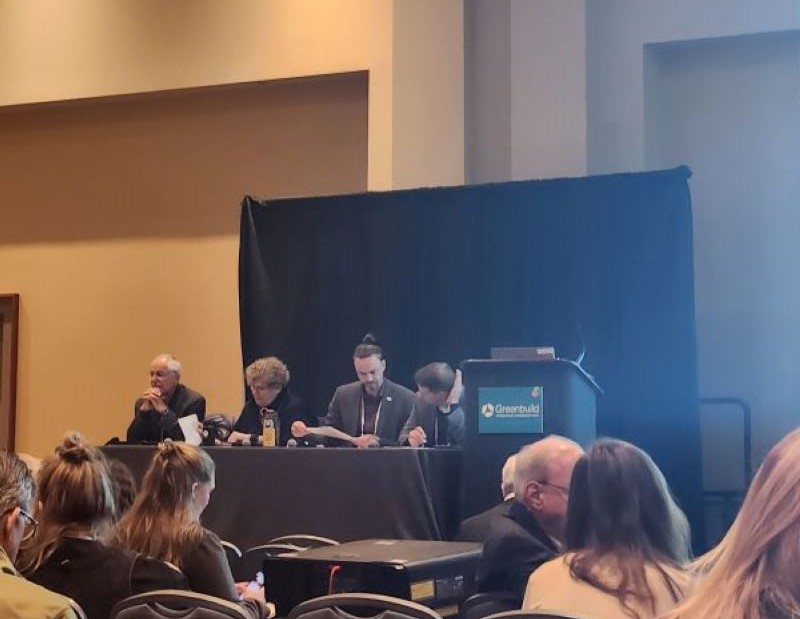Office Finance Freeze Begins Slow Thaw
Improved leasing is giving borrowers some hope, observes Gantry's Tony Kaufmann.

Financing office properties has become the greatest challenge of the post-pandemic marketplace. The sector has been hammered by a shift to a remote workstyle, the subsequent impacts on leasing and the steep rise of interest rates in the current “higher for longer” rate cycle.
Facing these conditions, the market has essentially been frozen since 2020, with few assets trading and maturing loans forced to extend and pretend as market participants search for their best go-forward strategies. Lenders and borrowers are working diligently to find solutions, and we are seeing the beginning of positive momentum in 2024.
We all know what type of office properties are not financeable in this cycle and are preparing for painful transitions. The Major MSA and CBD office towers that have defined the concept of American workstyle for roughly 100 years are the hardest hit by today’s new remote-work realities, and there isn’t an easy solution for the challenges they face in the near term. For the best of these assets, the flight to quality is real, but these standouts are few and far between.
READ ALSO: Expanding the Potential of Office-to-Housing Conversions
Suburban assets are functioning much better. Many of these buildings are occupied by smaller tenants that prefer to work in close proximity to where they live. Multitenant office properties with larger rosters of 10- to 20-plus tenants underwrite more efficiently because of their diversified rent roll. Also, mixed-use properties offering highly amenitized environments are attractive for similar reasons, with their diversified rent roll and access to lifestyle options driving the new workstyle in these environments. We are seeing financing solutions for these assets that should be encouraging to owners and sponsors.
The markets where we are seeing the best office performance are the niche office markets that rely on these organic fundamentals. First in almost all markets, we are seeing a flight to quality. In certain clusters we are seeing unique tenant mixes that still value the benefits of a chic, high touch office with collaborative settings. These assets in markets like Miami in finance or Los Angeles’ Westside in entertainment are performing well.
Approximately 95 percent of lenders are office-market shy and not likely to warm up to underwriting new loans until the wave of challenged maturities works its way through the system. Despite lenders performing well overall, they are taking hits from non-performing loans, most of them tied to office properties. At the same time, lenders are still averse to taking back property.
Prospects for financing
Time in the cycle has identified a limited number of life companies and banks that can be consistently counted on to underwrite office loans. Deals are getting done. Permanent loans on office are hard but doable when performance can meet debt service. Bridge loans are available, but expensive and very few will work at current pricing. All lenders will expect conservative leverage for office debt. They will not be interested in funding cash out proceeds. They are looking for diversified risk and sponsors with a track record. These lenders will only offer conservative loans on a per square foot basis. There will be a lot of assets that at current market value are not financeable because lenders perceive a bottom hasn’t yet been reached. Even with fresh equity added into the mix, many assets will be hard pressed to mitigate the risks posed by current and future anticipated performance.
Rates going down will help, even as spreads have widened marginally. Next year will be hopefully a better year. We have yet to hit a floor in terms of values, but we have hit a floor in tenant demand and it will continue to grow. Our best advice to clients right now is: If you have a loan in motion and you can live with a rate, take it. There might not always be liquidity there.
Some loans are being negotiated to look more like an expensive extension of existing loans and will offer some enhanced prepayment options because they come in at a higher cost. This kind of flexibility is attractive to a sponsor who sees future improvement in rate climate or asset performance or both as supporting a strategic business plan. If there is capital on hand, there are loans to be had that can align with debt service requirements.
While distress is real, we are not seeing the large wave of pressured transactions people expected would materialize. Most lenders and their borrowers are hoping to kick the can down the road and are working together to find the best outcomes for all parties. Improvement in leasing is keeping the market at stasis justifying maturity extensions. There is hope. However, without a strategic plan it may be time to hand over the keys. There is no light at end of tunnel for much of the office market. However, we are beginning see flickers of normalcy in terms of performance and fundamentals illuminating the way forward.
Tony Kaufmann is principal at Gantry.







You must be logged in to post a comment.